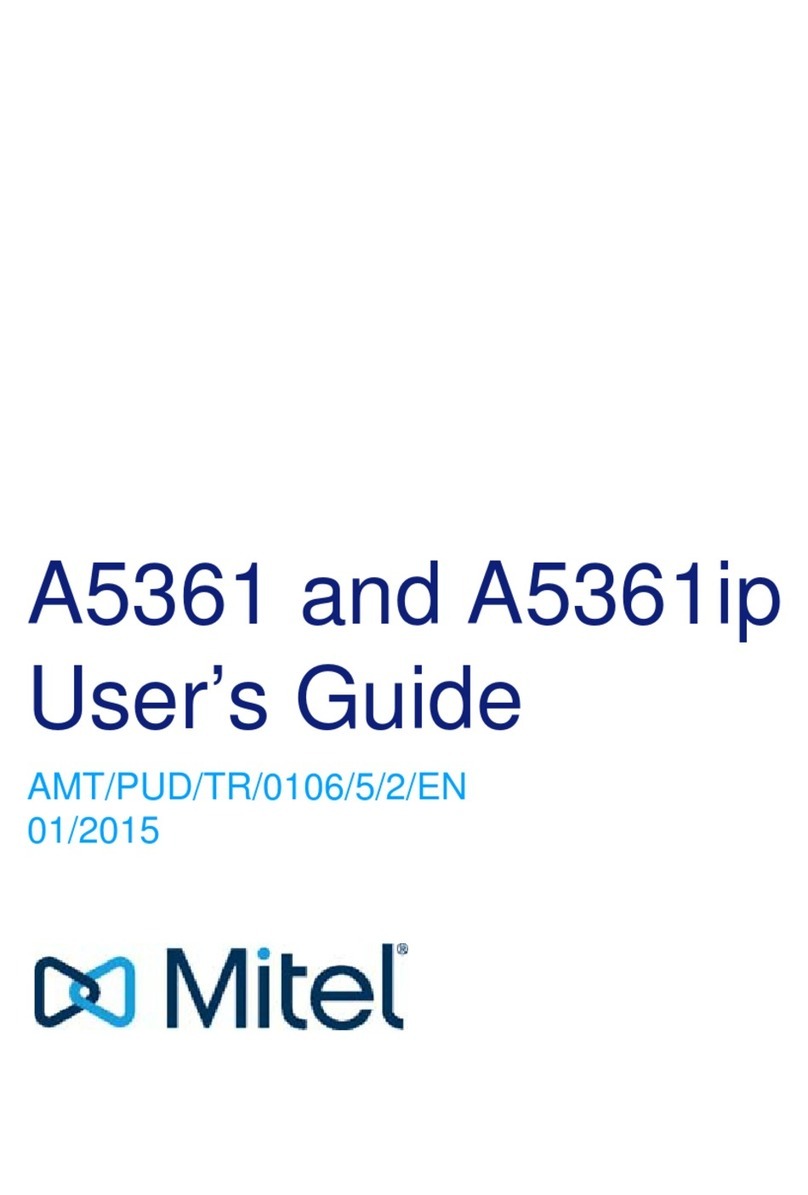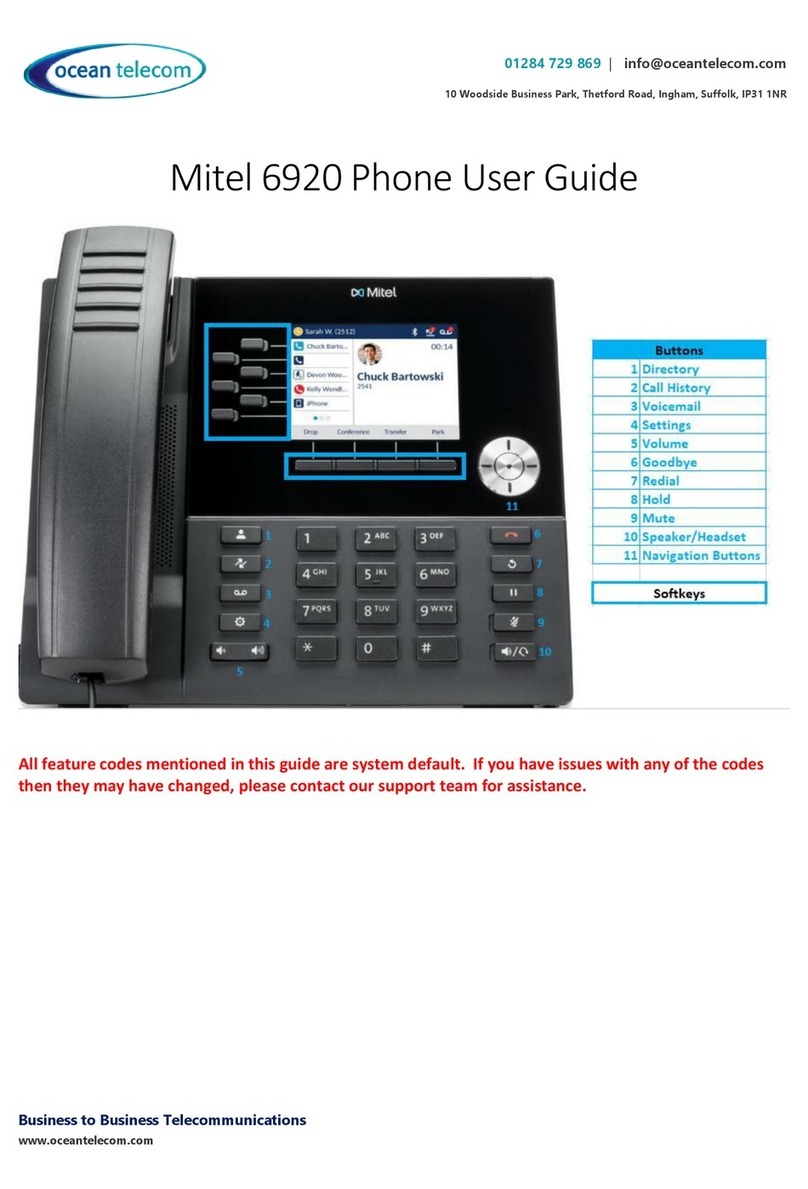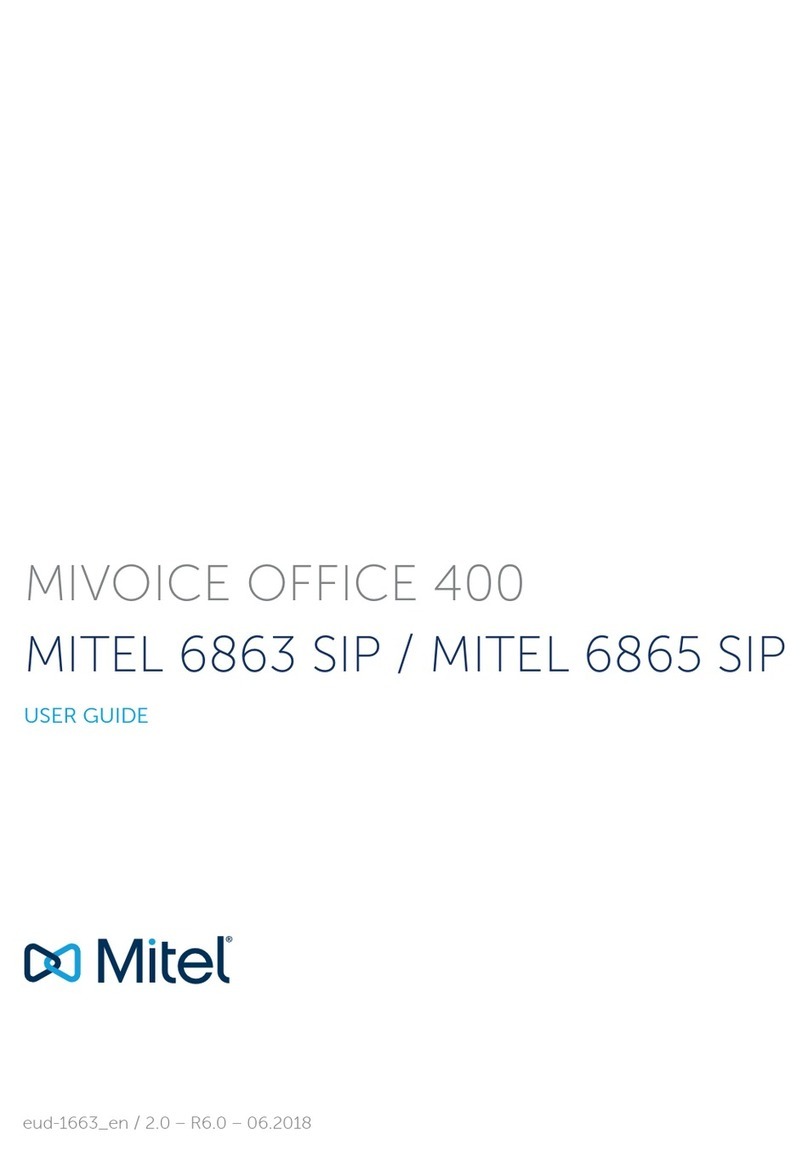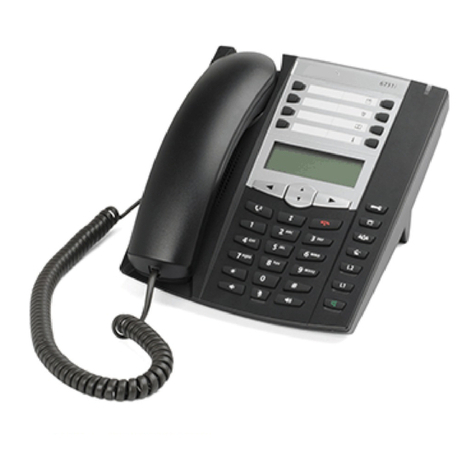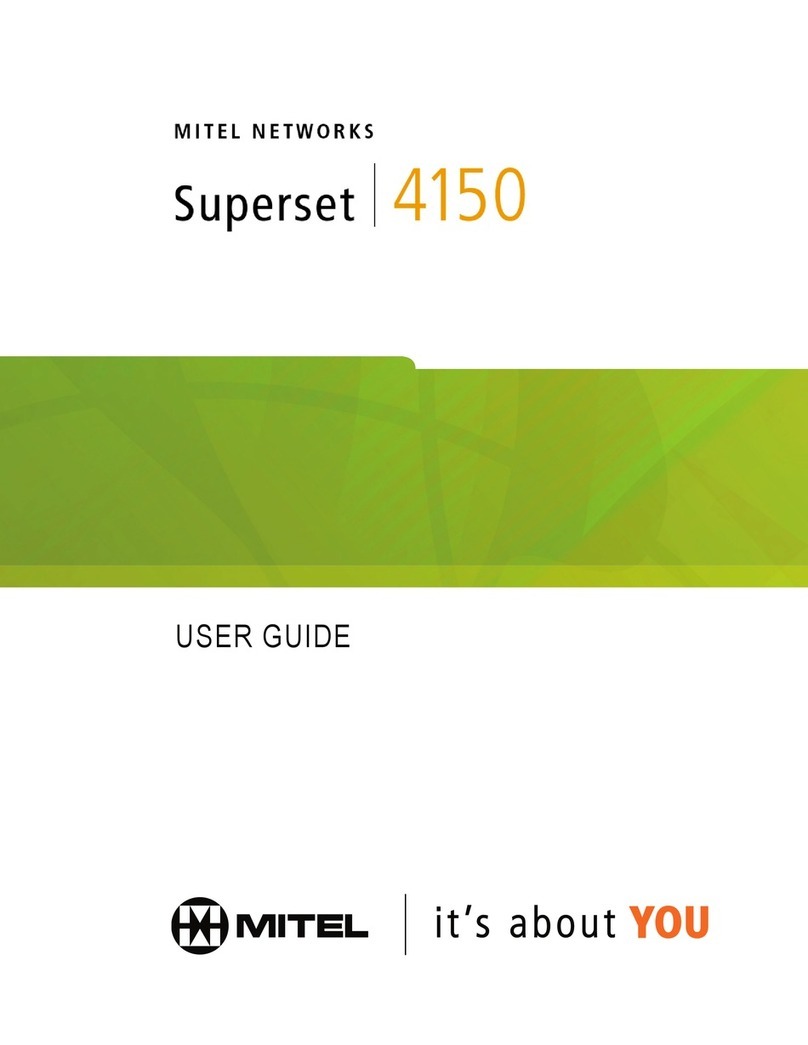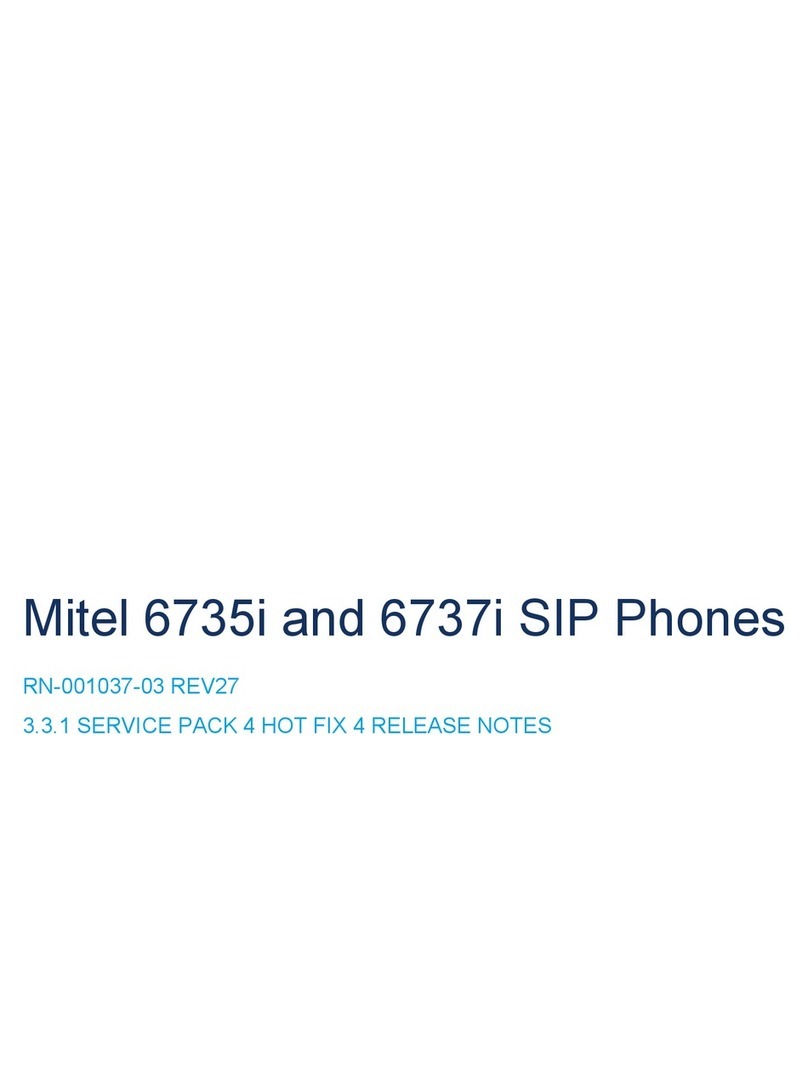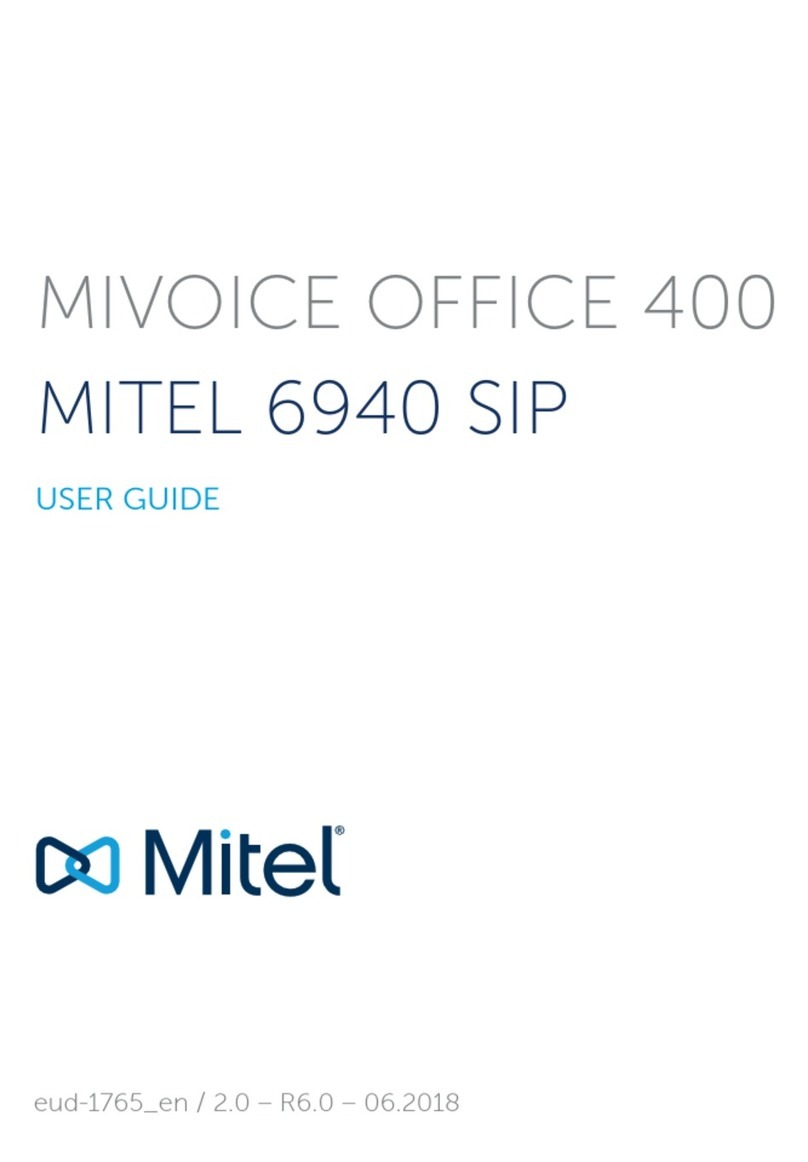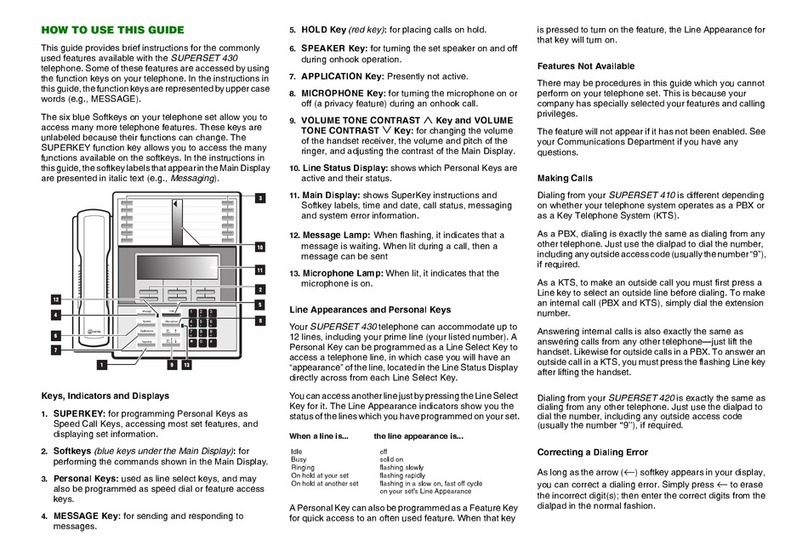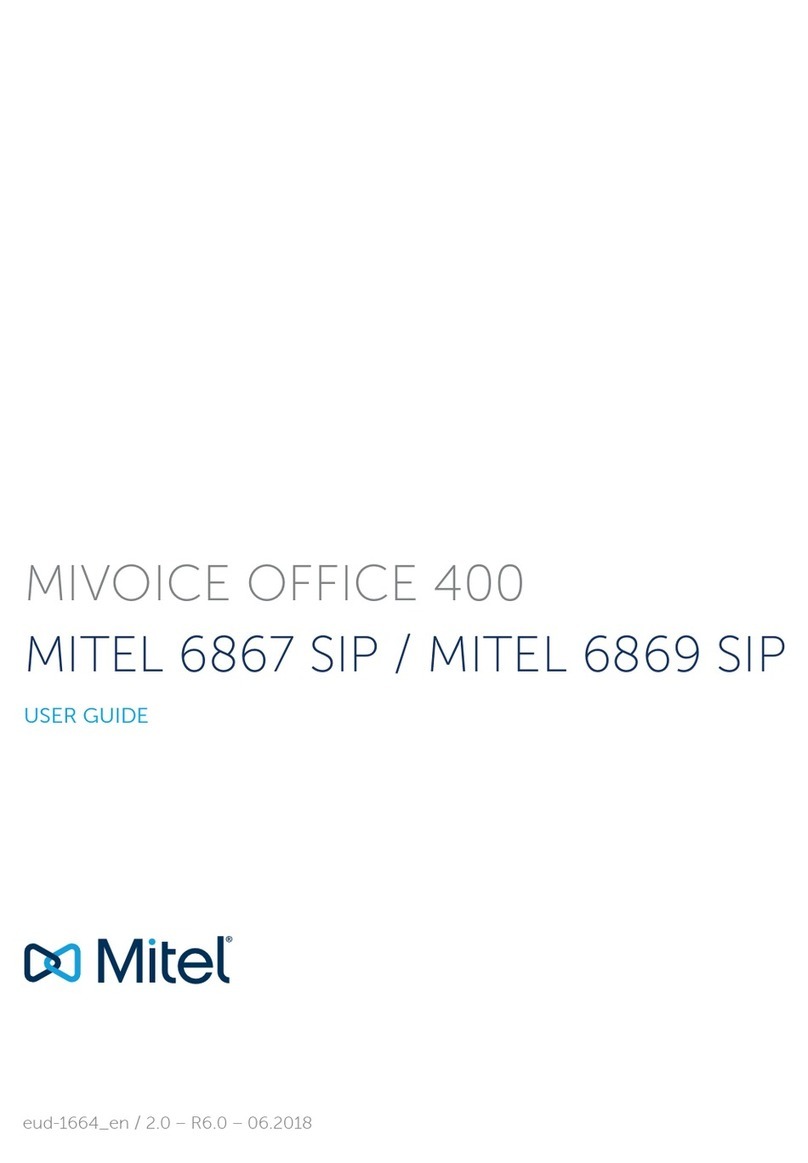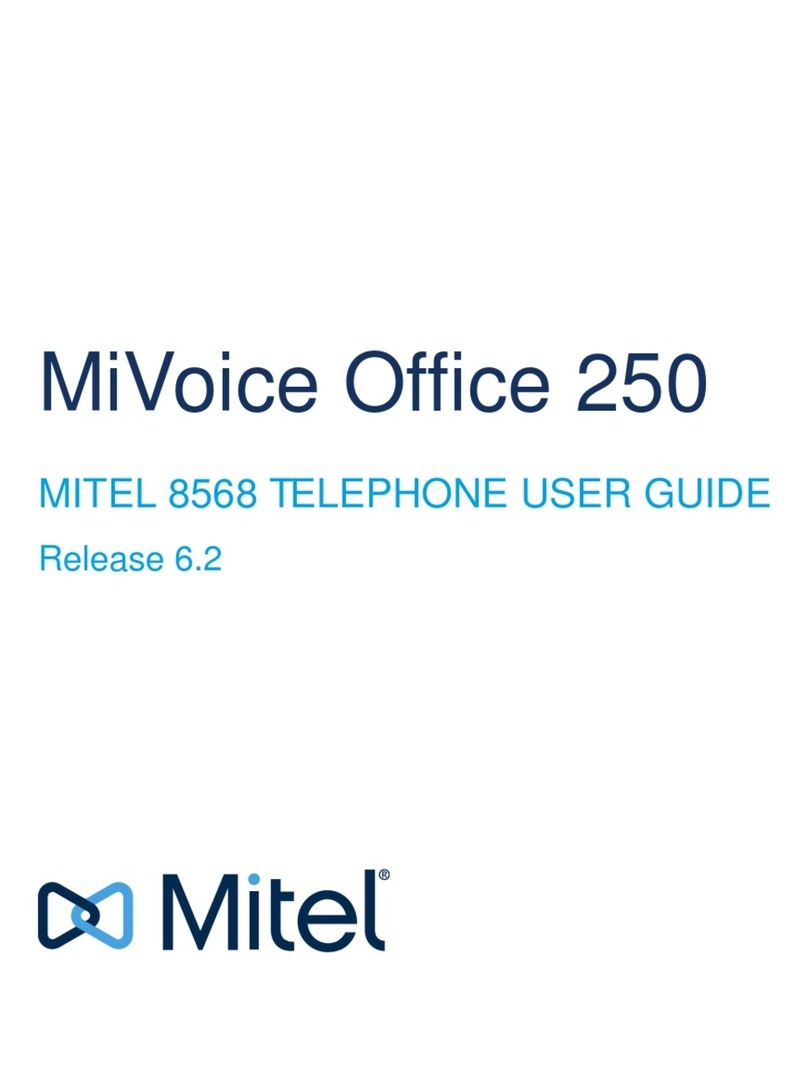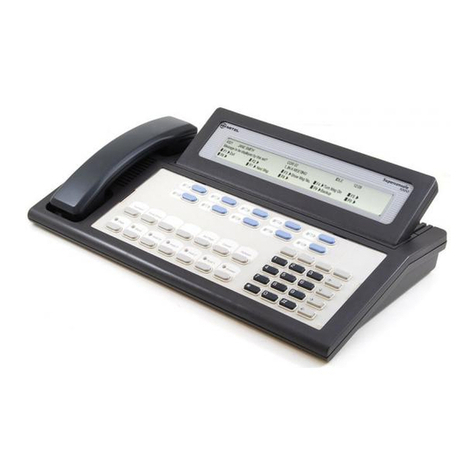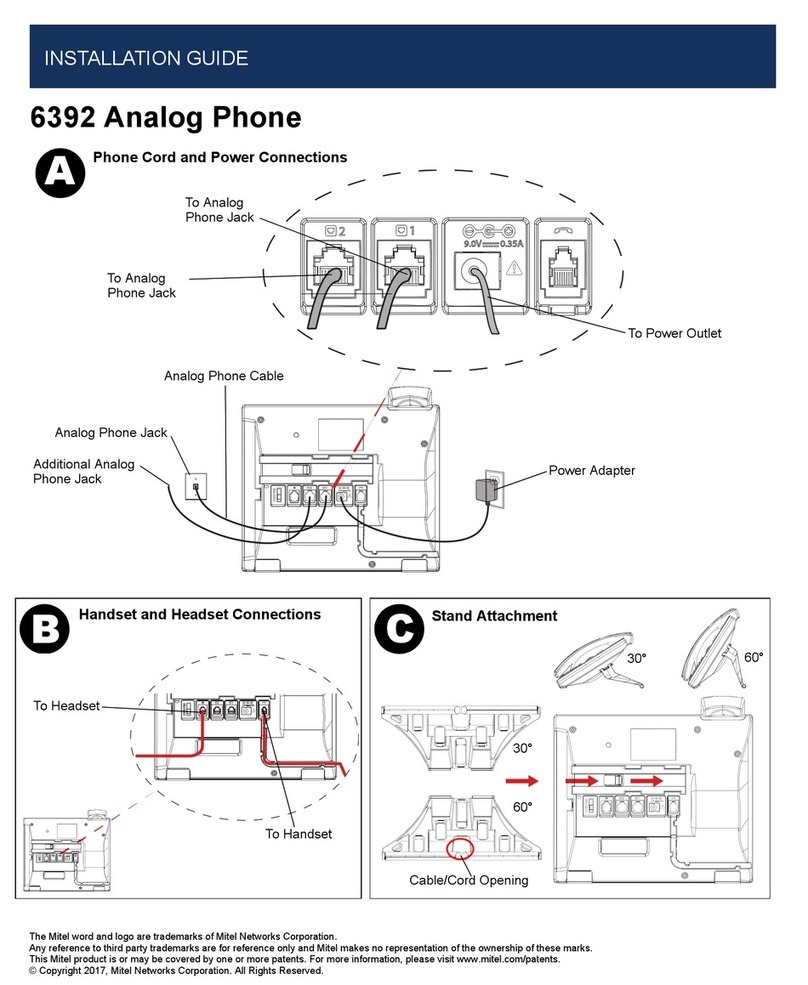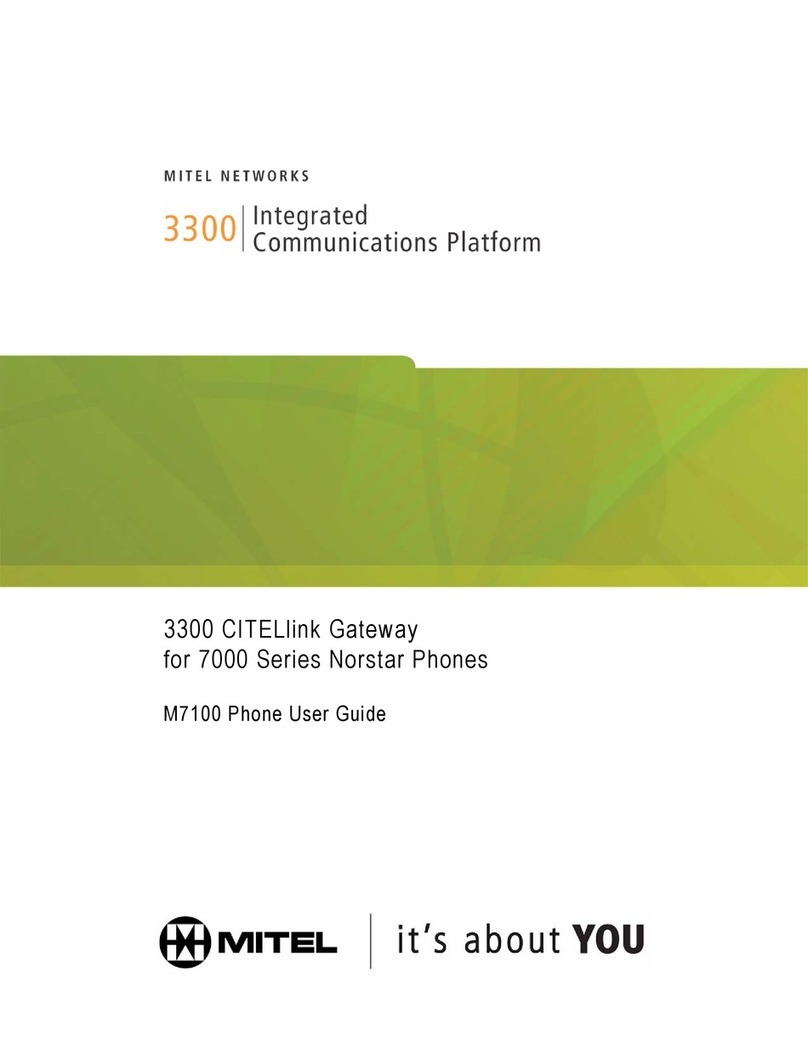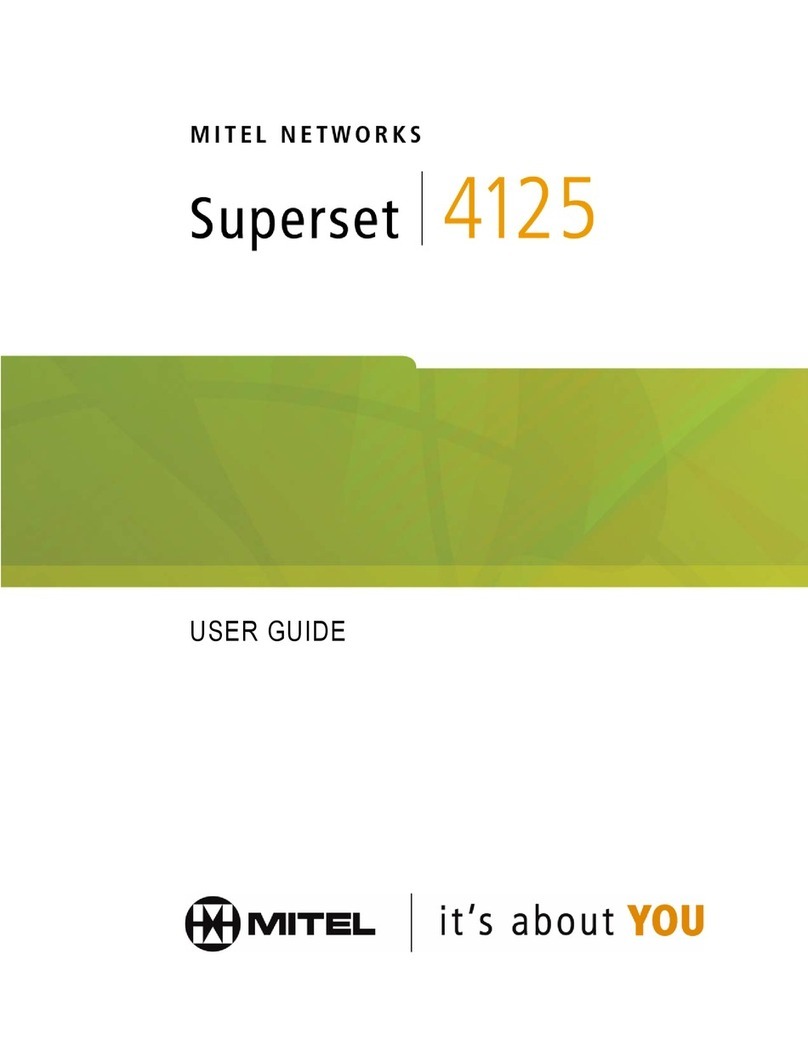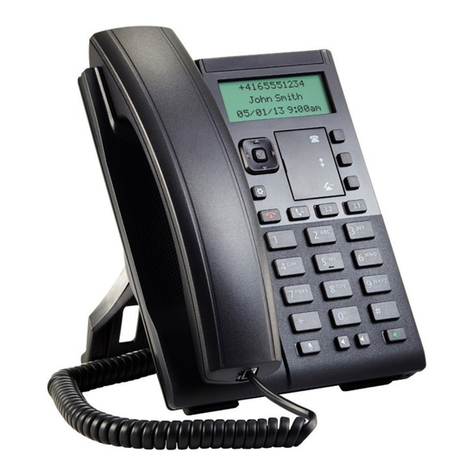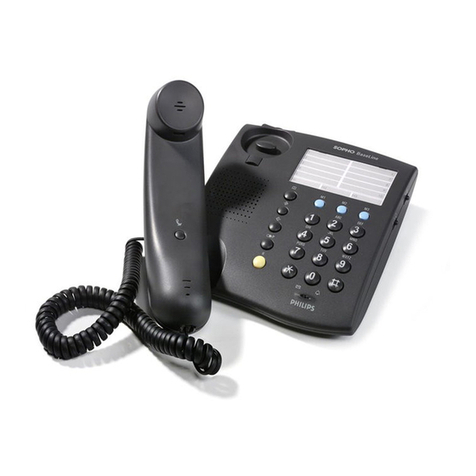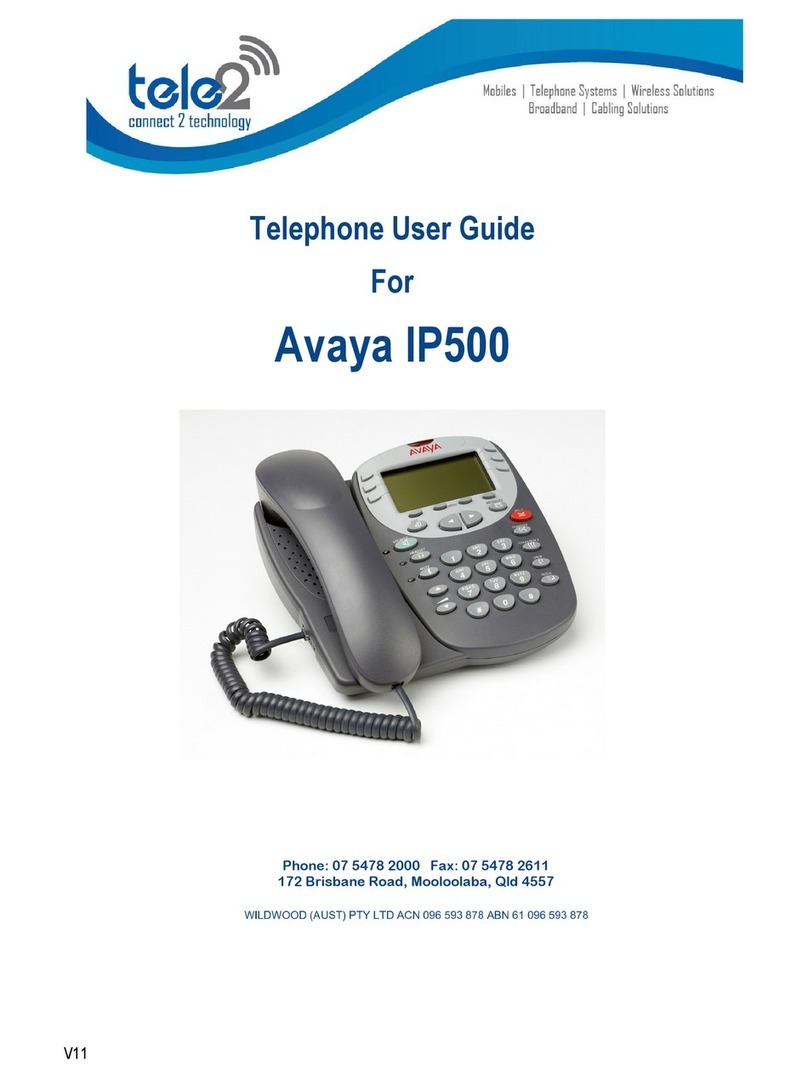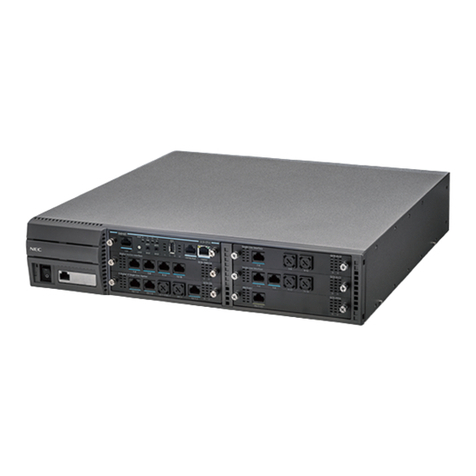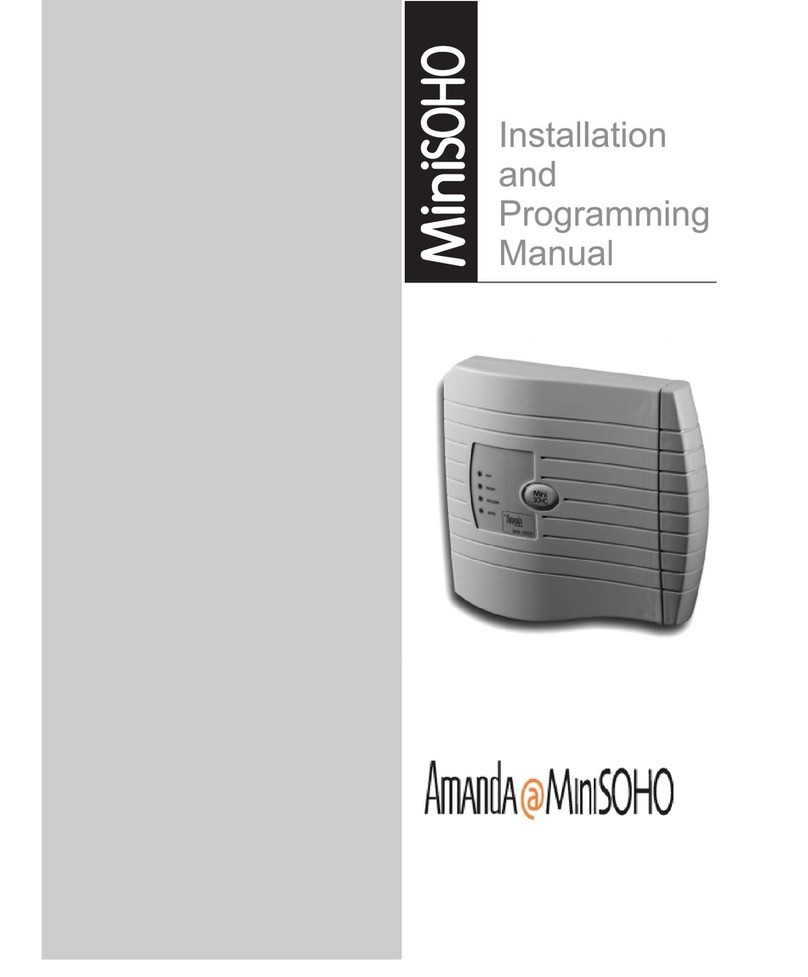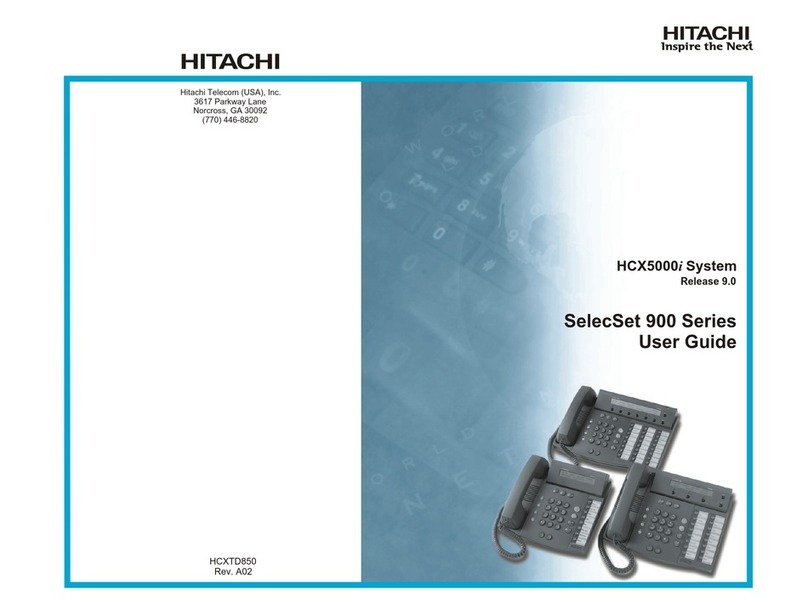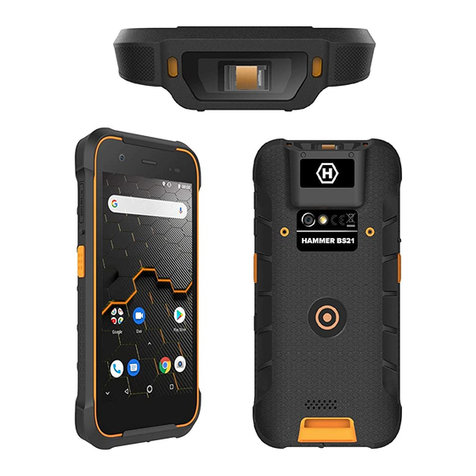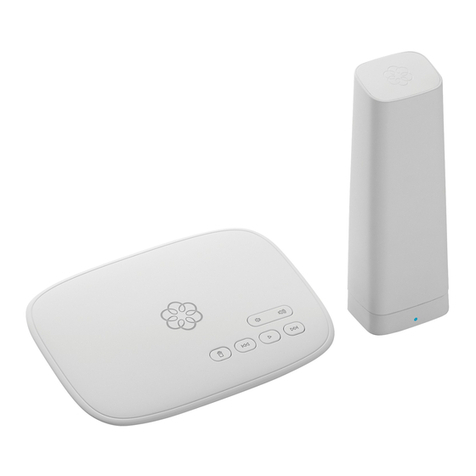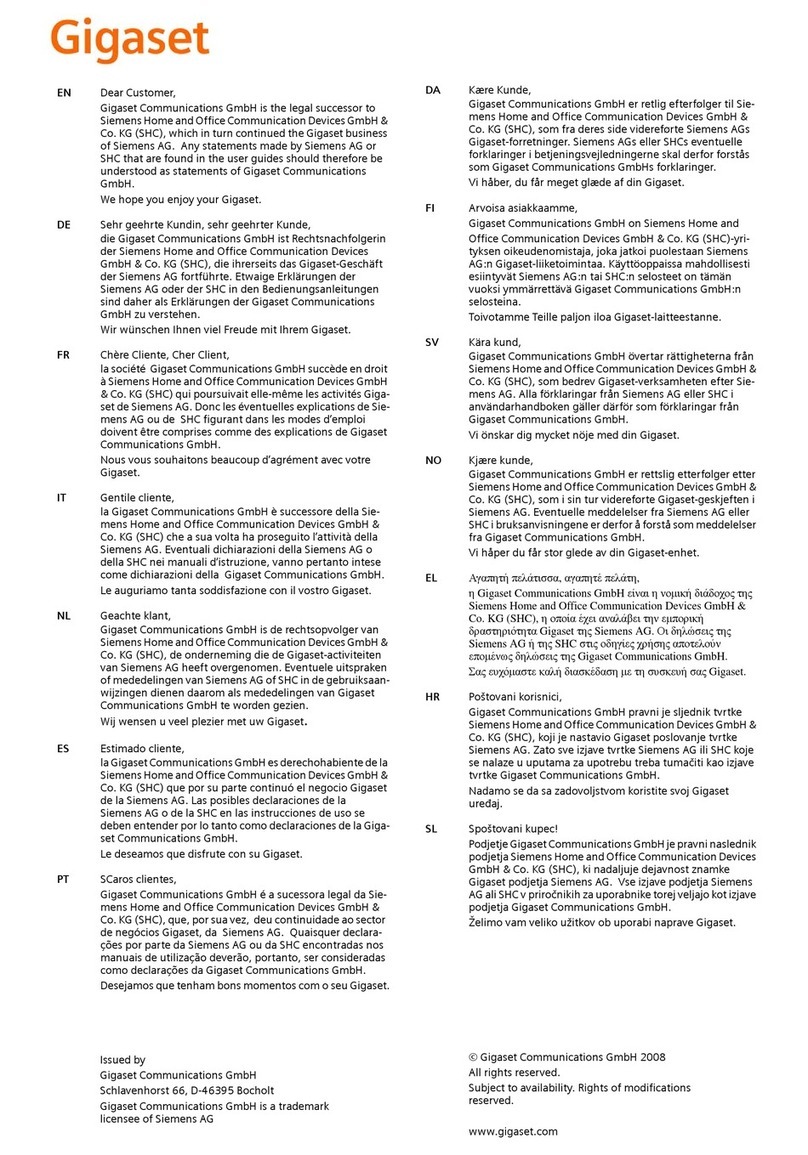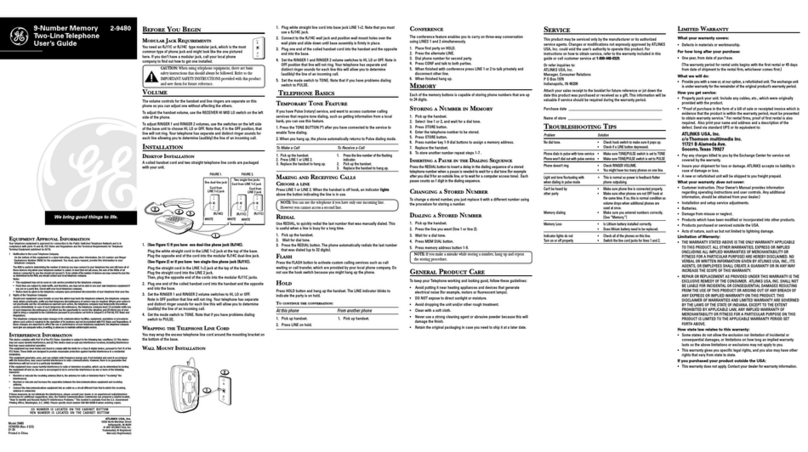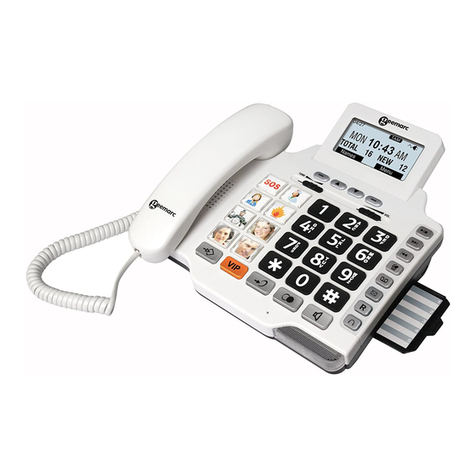
© Inter-Tel (Delaware), Inc. April 2008 Part No. 835.2461-6
Voice Mail Administrator Features
You can use the voice mail administrator mailbox to program the following voice
mail features.
Accessing the Voice Mail Administrator Mailbox
1. Dial the voice mail access number.
2. Press
* or say “Login” to identify yourself as a subscriber.
3. Enter or say the administrator mailbox number.
4. Enter the password, and then press #.
5. Press 9or say “Nine” to access the administrator menu.
Recording Broadcast Messages
1. Access the administrator mailbox as described above.
2. Press 1or say “Broadcast Message” to select broadcast message.
3. Record the message, and then press #to stop recording.
4. Press #or say “Accept” to accept the message.
Performing Subscriber Mailbox Maintenance
1. Access the administrator mailbox as described above.
2. Press 2or say “Mailbox Maintenance.”
3. Enter or say the mailbox, extension ID, or group list number, and then
follow the prompts.
Importing Fax Documents
1. Using a fax machine, obtain dial tone, and then access the voice mail
administrator mailbox as described above.
2. Press 4or say “Import Fax.”
3. Enter the fax document number, and then do one of the following:
• If the document number does not currently exist, press # or say
“Yes” if the number is correct, or press 3 or say “Re-enter” and re-
enter the number.
• If the document currently exists, press #or say “Yes” to replace the
document, or press 3or say “Re-enter” to enter another number.
4. When prompted, press Start on the fax machine.
Quick Reference Guide for System,
Voice Mail, and Diagnostics
Administrator Features
The following are basic instructions for frequently used admin station and voice
mail administrator features.
System Administrator Features
You can use the admin station to program the following system features.
Setting the System in Day or Night Mode
Dial 9860. NIGHT MODE IS ON (or OFF) appears followed by THE
SYSTEM IS IN NIGHT MODE, if the system is in Night Mode. If the
system is in Day Mode, the display returns to the idle state.
Setting the System or Network Date and Time
1. Dial 9800 (single node) or 9810 (multi-node). The programmed date
appears.
2. Use the dialpad buttons to enter the month, day, and year. For example,
enter 020308 for February 3, 2008.
3. Use the dialpad buttons to enter the time in hours and minutes. For
example, enter 0900 for 9:00.
4. If the system is set for 12-hour display format, SELECT AM OR PM (AM =
1 PM = 2) appears. Press 1(or the AM menu button) for A.M. or press 2
(or the PM menu button) for P.M. SYSTEM DATE AND TIME UPDATED
appears.
Synchronizing Network Time
Dial 9811. NETWORK TIME SYNCHRONIZED appears.
Responding to Alarm Messages
1. When a minor alarm indication appears, write down the alarm information.
2. While on-hook, dial 9850 (Clear System Alarm) or dial 9851 (Clear
Network Alarm).
3. Look up the alarm in the Administrator Guide and take the appropriate
action.
